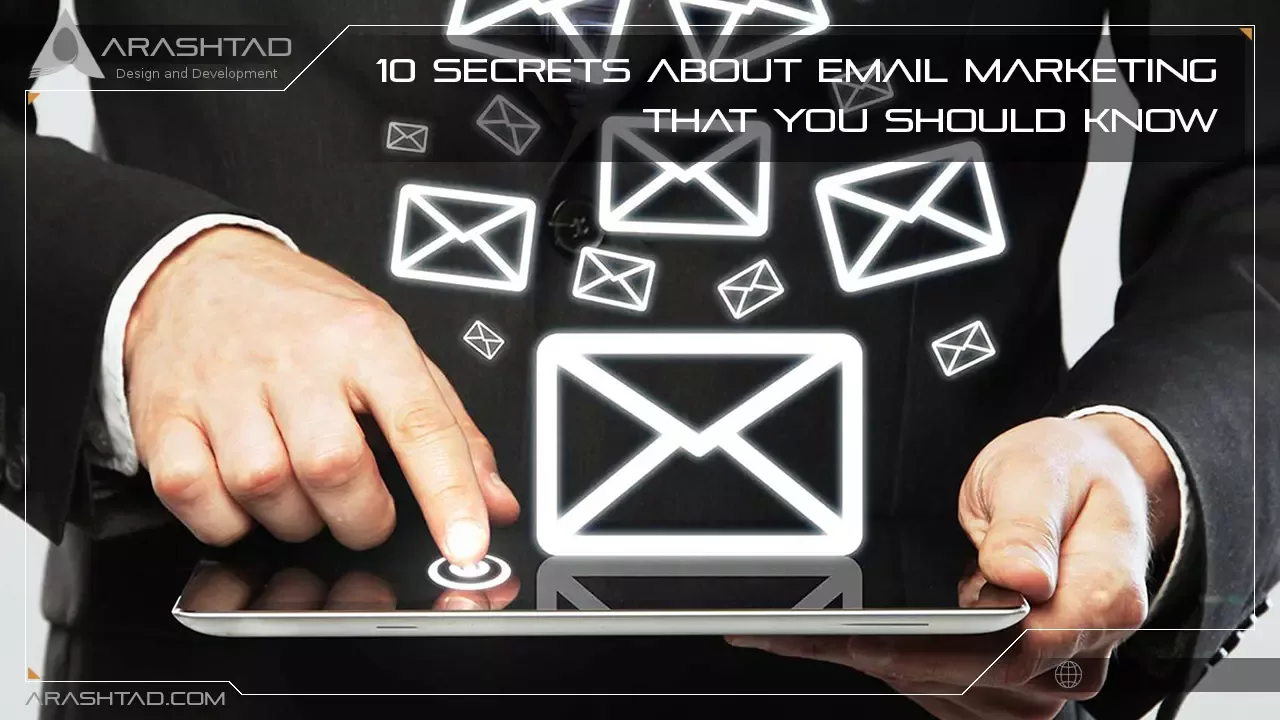10 Secrets about Email Marketing that You Should Know
The success of an email marketing campaign depends on many factors, which are summed up in ten fundamental points that every company should keep in mind. Even though some of these rules seem obvious, our experience shows that many companies fail to follow them, which is why their email marketing strategies could be more effective. If you want to avoid being another name on this list of failed campaigns, follow these ten commandments of email marketing.
1. Don’t Send Emails to People Who Aren’t Expecting Them
Before preparing an email marketing campaign, you should ask yourself, ‘Is the recipient actually expecting my email, and will they be interested in receiving it?’ We don’t want to send out emails randomly but rather to reach out to those interested in what we offer. Ensure that your data collection operations, particularly those performed by a lead generation agency, provide the quality leads you to need. Someone may give you permission to send them emails, but they do not want them or are not interested, so this lead is worthless. In addition, refrain from buying or renting any databases, as this is a bad practice and will only cause you problems.
2. Maintain a Clean and Well-organized Database
You must take good care of your database to succeed with your email marketing campaign. If someone no longer wants to receive your emails, there is no point in keeping them in your database (remember rule #1), so do not make opting out difficult for them. Add an unsubscribe link at the top of your emails so recipients can easily unsubscribe. It is also important to ensure the email marketing platform you use has feedback loop agreements with the main internet providers and ISPs. Keep your database active and in good shape by cleaning any hard bounces and excluding inactive accounts from any new emailing drives (you can target these with special revival campaigns later on).
3. Consider Your Users as Customers, not Just Email Addresses
Choose the appropriate tone when communicating via email with your customers based on the relationship you wish to build and maintain. Personalize your emails to make the relationship feel closer, and listen to what your users say. To accomplish this, you must set up a reply-to address. To do this, you should set up a reply-to address and read and respond to your users’ emails. Try to provide them with some form of added value rather than just bombard them with promotional emails.
4. You Should Always Clearly Identify Yourself
You must be able to identify yourself at first glance, regardless of the sender’s name, logo, images, links, or any other element. By clearly identifying yourself, you will help build trust with them and gain their loyalty. In addition, if you clearly identify your emails, they are also more likely to be delivered to their intended recipients. Spammers conceal themselves to make it easier for ISPs to block them, but your email marketing provider will be your biggest ally in this regard since they are supposed to help you!
5. Continuously Monitor Your Campaigns’ Results
As databases constantly evolve, you must identify changes quickly and adjust your strategy accordingly. You will be able to adapt your email marketing operations to meet the needs of your users if you analyze and understand the statistics provided by email-sending platforms. To achieve this, you should work with your email marketing provider to optimize your strategy and get the most out of this information.

6. Analyze Your Database’s Behavior and Adapt Your Strategy Accordingly
To segment your audience, you should use all of the data you have on your customers to create homogeneous groups with similar buying habits and perceptions of your brand. In today’s marketing world, mass emailing is no longer the norm. You must tailor your campaigns to each segment and adapt your approach accordingly. You should also perform an A/B test to understand your recipients better. Try it with different subjects, sending times, content, etc., to see how you can adjust as closely as possible to their expectations. You should also filter out inactive accounts and target them with special campaigns to understand why they have yet to open your emails.
7. Design Your Email Carefully
You must establish a visual identity to reinforce your message and build trust. Identify hot spots within your messages and locate your ‘calls to action and any buttons and links you want recipients to click on. Remember the HTML as well since the layout of your message is essential. Be sure your message is readable by all clients, webmail providers, and mobile devices to ensure it is read correctly. You should also optimize the HTML code to prevent it from marking your email as spam. Keeping an even balance between images and text can help you avoid being marked as spam, as emails containing only images cannot be viewed without activating the images, and emails containing just text are monotonous. In this regard, your provider can provide you with expert advice.
8. Be Innovative, Surprise Your Audience, and don’t Bore Them
Your opening and click-through rates may drop if your recipients are bored or if they find your messages disappointing if your recipients find your messages boring or depressing. You need to attract and keep your users’ attention, and the secret to this is to surprise them. To maximize the effect of your emails on the user, you can and should experiment with various factors, including the subject, the design, the send time, the type of email, and the offer, among others. When you repeatedly structure your argument the same way, no matter how good it may be, it loses its effectiveness. Even though the subject line of company X’s email was far less appealing, it observed significantly higher opening rates when the company accidentally sent out an email with the subject line Email day 16 instead of the usual offer of the day with a 15% discount. Even though the email was different, recipients opened it purely out of curiosity.
9. Think Mobile
Email marketing is becoming increasingly complex as we shift from single-medium consumption (the PC you’ve been using your entire life!) to multi-media consumption (PC, mobile phone, tablet, smart TV, apps, etc. ). Because at least 30% of your recipients will open your email on their mobile phones, you must adapt your communications accordingly. You cannot send a simple HTML email if you want all of your recipients to be able to view it. Responsive email design allows you to customize your message based on how each recipient opens it.
10. Choose a Technology Partner Who Is Reliable and Professional
In addition to sending emails, your email marketing provider should inform and advise you on improving your strategy. Moreover, you should ensure that your email marketing platform follows all good technical practice guidelines (feedback loop agreements, automated hard bounce detection, and cleaning, technical identification of emails, etc.) that will directly affect your emails. It would help if you worked closely with your provider to succeed in your email marketing operations. They should provide you with any help and direction you require.
Conclusion
Final Takeaways Email marketing is still one of the most effective ways to promote your online store, build customer relationships, and generate sales. The final step in this process is to put all these pieces together into an effective strategy. This means creating creative and effective ways to construct emails and email series. Additionally, you need to be able to measure the results of each tactic so that you can continue to improve.

